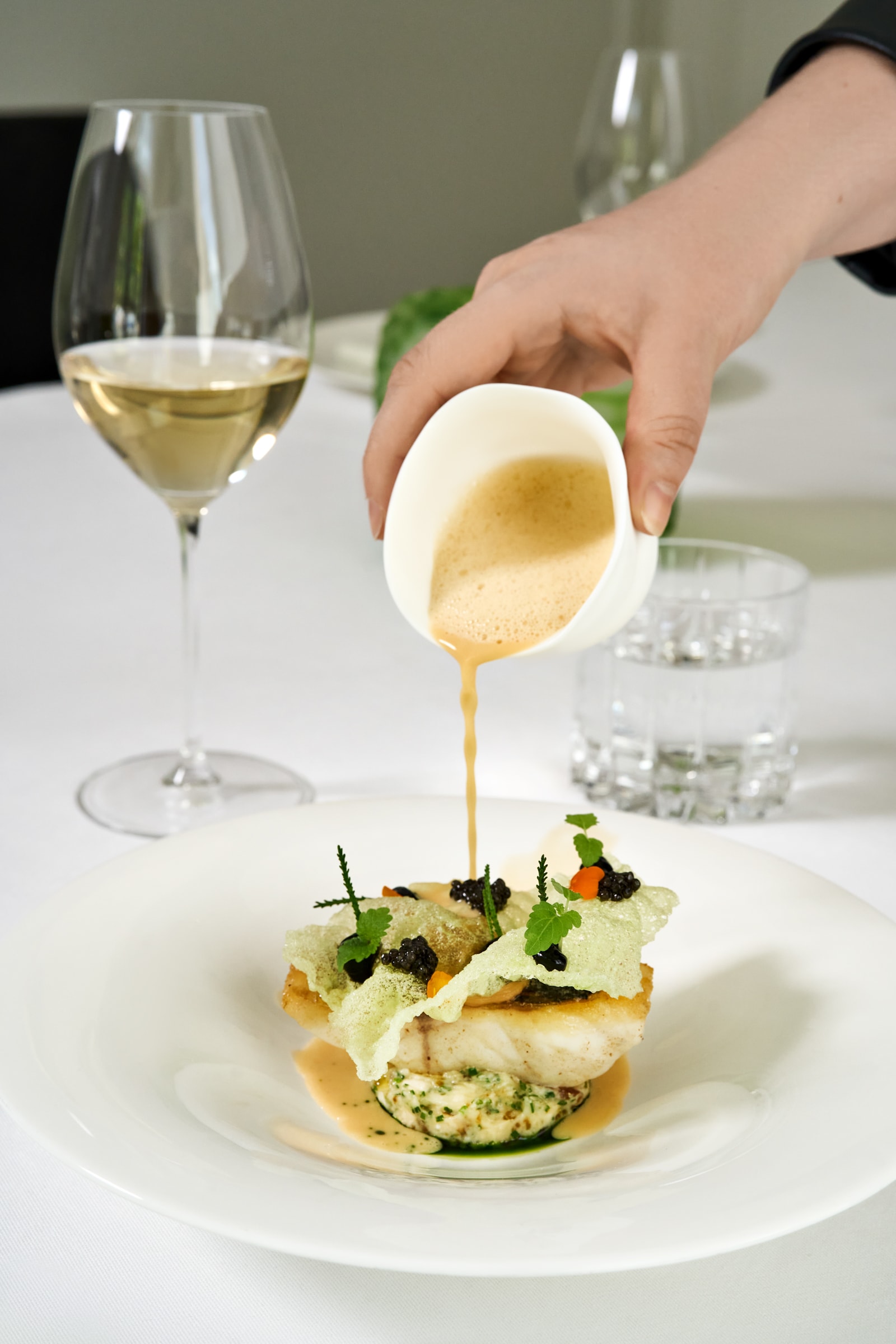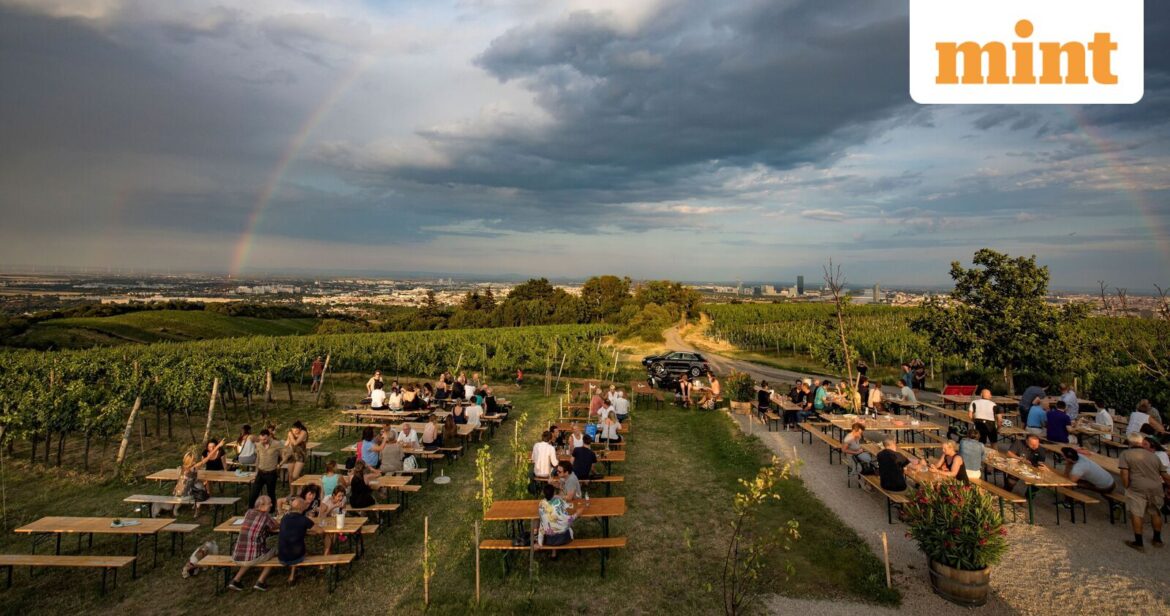On a blustering winter morning, I find myself staring at the autumnal colours creating a patterned carpet on the footpath at Stammersdorf, Vienna. The air is crisp and fresh, much like the wines that this little village at the foot of the Bisamberg Mountain produces. I am at one of the vineyards Weingut Wieninger, where I try Gemischter Satz, an elegant wine with good acidity.
Gemischter Satz is the quintessential wine of Vienna. A traditional white wine, it has had a protected designation of origin (DAC) since 2013 .The growing method involves co-planting, harvesting and fermenting different wine varieties together. It serves as a great introduction to Viennese wines.
Austria’s capital stakes claim as being the only city in the world with a wine-growing region within the city. The outer districts, which stretch out on to the hills, offer ideal conditions for growing local varieties like Grüner Veltliner. The city produces over 2 million litres of wine annually, much of which is drunk locally—typically at a wine tavern or buschenschenken or heurigen.

View Full Image
Anantara Palais Hansen Vienna Hotel.
“When you grow up in Vienna, strolling through the vineyards and visiting a traditional wine tavern is simply part of everyday life,” says Caroline Derler, who curates bespoke wine and culinary experiences, and is my wine guide in Vienna.
At my every meal in Vienna, I try these see local wines, from the elegantly crafted meal at Michelin-starred EDVARD Vienna at Anantara Palais Hansen Vienna Hotel to the luxurious lunch at the 12th century Pfarrwirt (which served wines from their own winery, Mayer am Pfarrplatz). “Viennese people are generally patriotic and somewhat conservative when it comes to wine—they tend to prefer wines from Vienna or nearby regions rather than experimenting with international varieties,” says Klaus Lechner, sommelier at EDVARD.
Standing on the slopes of the Weingut Mayer am Pfarrplatz, the city is spread out in front of me. A snaking pathway leads up to the vineyard, offering stunning views on both sides. This pathway, I am told, is a popular hiking path. “Wine hiking is a beloved pastime here. Especially in spring and autumn, locals and visitors alike enjoy walking along the vineyard trails at weekends, stopping at traditional buschenschenken to enjoy hearty food and a glass of local wine,” says Derler. Each year, the city hosts a Wine Hiking Weekend too in late September, early October.
I take that well-trodden path down to Pfarrwirt, what they call the “oldest restaurant in Vienna”. The building came up in 1180, and the restaurant today serves local Viennese food like goose soup with semolina and Wirsthaus pepper steak. Nearby is the house (now a museum) where Ludwig van Beethoven once lived.
At Pfarrwirt, I try some of the local wines, including an alcohol-free one, and of course, their Gemischter Satz. The latter comes from a long-standing winemaking tradition involving different grape varieties planted together in the same vineyard, harvested at the same time, and vinified into a single wine—the blend is created in the vineyard, not in the cellar. “It promotes biodiversity, as the different grape varieties—with their unique genetic traits—balance and support each other naturally. Vienna has kept this field blends’ tradition truly alive. And in times of climate change, I believe field blends are set for a well-deserved revival,” says Derler.
View Full Image
A vineyard in Vienna. (Joanna Lobo)
SOIL MATTERS
On the slopes of Vienna, its soil is undergoing a quiet renaissance as a group of winemakers are rethinking the city’s wine culture, creating a spirit that is organic, sometimes biodynamic, and always delicious. Viennese wineries are the forerunners when it comes to organic viticulture. More than half of them are already certified organic. “Organic and biodynamic practices not only protect biodiversity and soil health, but also help ensure that urban agriculture remains viable, clean, and sustainable for generations to come,” Derler says.
Biodynamic wine involves a holistic approach to viticulture and winemaking, often involving the use of herbs and minerals, special compost, and sometimes a planting calendar. It looks at the vineyards as an interconnected ecosystem.
Leading the biodynamic charge is Austrian winemaker Fritz Wieninger. It was around harvest of 2005 that Wieninger, who has been leading the family’s winemaking business since 1987, saw several problems like that weren’t solved by conventional pesticides. He decided to tread an alternative path, and two years later, the complete winery became biodynamic. “We don’t use herbicides, and insecticides, but employ natural treatments,” says Wieninger. “The vineyards look healthier than before, there is more balance in growing and a stronger resilience against extreme weather conditions. But most of all the wines taste more complete, more multilayered and fuller in character.” Wieninger is part of Respekt-BIODYN, an association for biodynamic viticulture and a certification body.
Lechner, who uses Wieninger’s wines as pairings on EDVARD’s menu, believes that these biodynamic winemakers contribute significantly to the city’s biodiversity too (it’s not uncommon to find up to 25 different flowers and grasses growing between the vines). Derler too, is a fan of “working with nature and keeping the soils alive and healthy”.
Derler is part of the Female Wine Collective in Austria, which also includes Patricia Sackl, a viticulturist and winemaker at the biodynamic winery, Winebau Sackl. “People often think biodynamics is some kind of mystical ritual with no practical basis. In reality, it’s very pragmatic—about observation, timing, and ecological balance,” she says. “You just have to taste the results.”
The said results are an improvement in crop health, plant nutrition, a visible change in the soil, and in the overall vitality of the vineyard, and the vines’ ability to withstand heat stress. “What’s even more important: you can actually taste the difference in the final wine—less stress, more balance,” says Sackl.
Sackl says biodynamic farming is not just a technique but a mindset. “You start to see your land as a partner rather than a resource. You might lose a bit of yield, but what you gain is terroir: character, depth, and a true voice of place.”
As Fritz Wieninger puts it, if you want to reach to the next level in winemaking then biodynamic inspiration will have to be a part of it.
Joanna Lobo is a Goa-based journalist.


Dining and Cooking